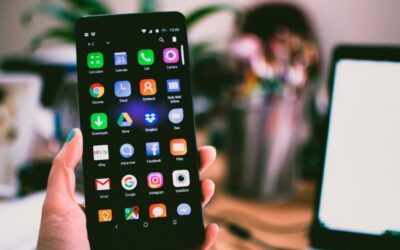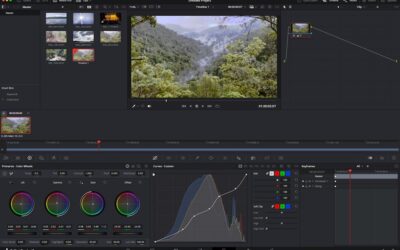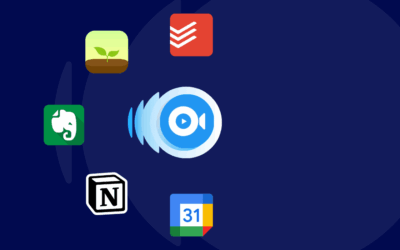Review: Apple Vision Pro – Innovation or Hype?

Apple’s entry into the world of virtual reality and augmented reality with the Vision Pro has been one of the most talked-about launches in recent tech history. As the company’s first spatial computing headset, Apple Vision Pro brings with it not just the signature sleek design Apple is known for, but also a new promise for the future of immersive digital experiences. But does it live up to the hype, or is it another overpriced gadget riding the Apple brand wave?
The Vision Pro aims to blend digital content seamlessly into the real world. It’s not a typical VR headset—it’s Apple’s answer to the concept of mixed reality or “spatial computing.” Unlike most headsets that lean heavily into virtual worlds, Apple has created a product that tries to let users stay present in their environment while interacting with apps, games, and content floating in their visual space. The device supports eye tracking, hand gestures, voice control, and more. But as with any high-end technology, expectations are sky-high, especially with a price tag pushing $3,500.
Design and Display Quality
Apple has done what it always does well—delivered a beautifully designed product. The Vision Pro looks futuristic, clean, and polished. The materials feel premium with a lightweight aluminum alloy frame and a soft, adjustable headband. The overall design isn’t bulky like some competitors and is surprisingly comfortable to wear, even for extended periods.
What truly stands out is the display. The Vision Pro features two ultra-high-resolution micro-OLED displays with a total of 23 million pixels. The image clarity is stunning—everything looks sharp, vibrant, and lifelike. Watching a movie or viewing photos on this device is immersive in a way that traditional screens simply can’t match. The field of view is wide enough to avoid the tunnel effect seen in cheaper headsets.
The eye-tracking system is also extremely responsive. It detects where you are looking and uses that information to navigate menus and select items. Combined with precise hand gesture controls, it creates a natural and intuitive experience.
User Experience and Interface
Apple has introduced a new operating system with the Vision Pro called visionOS. It looks familiar to iOS and iPadOS users but is optimized for a spatial interface. You can see app windows floating in the air, move them around, resize them, and even interact with multiple apps at once. For example, you can have Safari open in one corner, Messages in another, and a video playing in the middle—all while seeing your real environment behind them.
Voice commands using Siri work as expected, and Apple has focused on making interactions feel natural. The seamless transition between the physical and digital worlds is perhaps the most impressive aspect of Vision Pro. You can quickly switch from full immersion in virtual content to a view of your real surroundings using the Digital Crown, similar to what’s found on the Apple Watch.
Productivity and Entertainment
One of Apple’s big selling points is the Vision Pro’s potential for productivity. You can connect it to a Mac and use it as a large virtual display. The interface supports full keyboards and mice, so it’s possible to work on spreadsheets, documents, and presentations in a floating workspace. While still early, developers are creating apps specifically for visionOS, which should expand its functionality over time.
Entertainment is another major use case. Watching a movie or TV show on the Vision Pro feels like sitting in a private theater. It supports spatial audio, which adds depth and directionality to sound. Apple TV+, Disney+, and other major platforms have already optimized content for this device, offering immersive experiences in 3D and 360-degree formats. There are also interactive AR games and educational apps, though the content library is still growing.
Battery Life and Limitations
Battery life is one area where Vision Pro falls short. The device uses an external battery pack that connects via a cable and only offers around 2 to 2.5 hours of use per charge. That’s not ideal, especially considering the price. Apple does offer the ability to use it while plugged in, but that limits portability and freedom of movement.
Another limitation is content. While Apple has made a strong start, the ecosystem of visionOS apps is still in its infancy. It will take time before there’s a rich and diverse library of apps, especially ones that fully take advantage of spatial computing.
Also, despite being more comfortable than other headsets, wearing the Vision Pro for extended periods can still cause eye fatigue or motion discomfort for some users. It’s not a device you’ll want to wear all day.
Is It Worth the Price?
At $3,499, the Apple Vision Pro is clearly not a mass-market product—at least not yet. It’s aimed at early adopters, professionals, creatives, and tech enthusiasts who want to be part of the next wave of computing. For them, the price might be justified by the hardware quality, innovation, and ecosystem integration.
For casual users, however, it’s a tough sell. There are more affordable VR and AR headsets available, such as the Meta Quest series, which offer good experiences for a fraction of the price. While those products aren’t as advanced, they still provide value and entertainment without the financial commitment.
Conclusion
Apple Vision Pro is undeniably a bold and impressive step forward in the world of immersive technology. Its display quality, user interface, and seamless AR/VR blending set a new standard in the industry. However, it’s still a first-generation product with limitations in battery life, content, and affordability.
For now, it’s a premium experience for a premium price. But if Apple can continue to build its app ecosystem, improve battery performance, and eventually bring down the cost, the Vision Pro could very well shape the future of how we interact with digital content.
Whether it’s pure innovation or partly hype, one thing is clear—Apple has made a powerful entrance into the world of spatial computing.
















